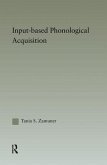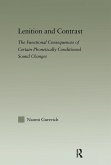This book examines the timing of geminates in Bernese (a Swiss-German dialect), Hungarian, Levantine, Arabic and Madurese (an Austronesian language of Indonesia). These languages differ as to whether vowel length is underlyingly contrastive, whether long vowels may precede geminates and whether non-medial geminates are allowed. Two questions of primary interest are in what ways these phonological differences influence phonetic duration, and how geminates are integrated into the overall timing strategies of the languages. Based on acoustic studies of the four languages, the author argues that differences in geminate timing are ultimately correlated with whether a language is syllable- or mora-timed, such that geminates in the former type are typically shorter. This observation is accounted for in a model of geminate timing which integrates phonetic and phonological factors with both syntagmatic and hierarchical influences. Other topics addressed include the moraic theory of geminates, "weightless geminates" and word-final geminates.
Bitte wählen Sie Ihr Anliegen aus.
Rechnungen
Retourenschein anfordern
Bestellstatus
Storno









